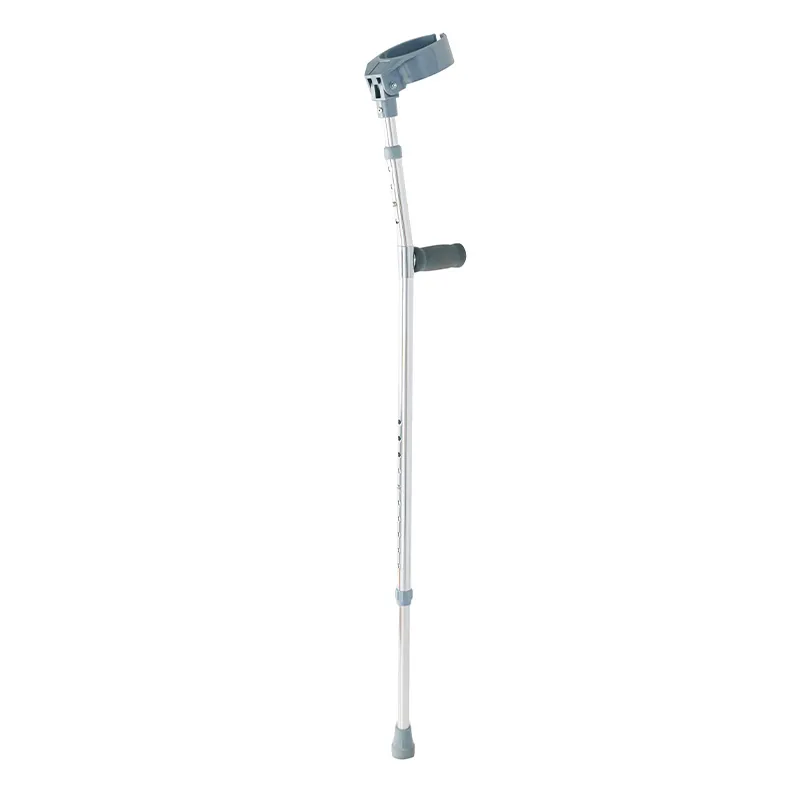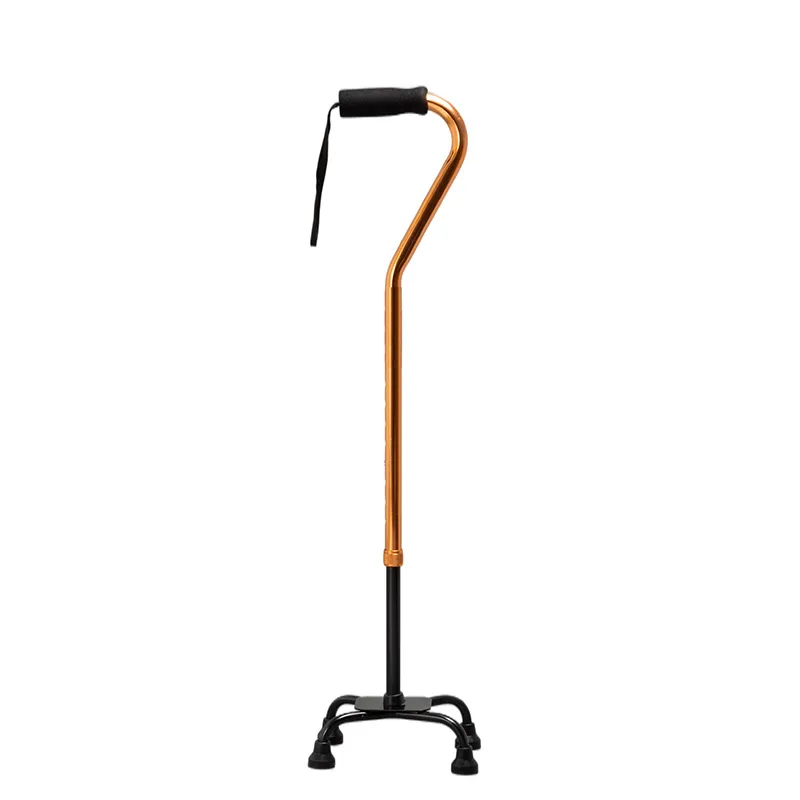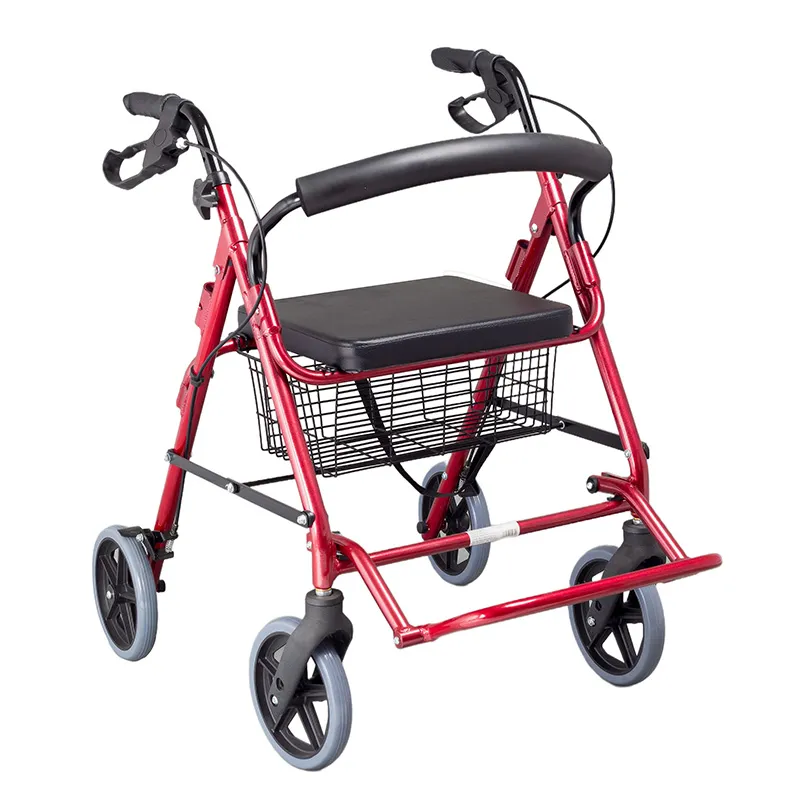
Why is the cane the most unstable assistive device?
2024-10-07 15:30
In modern society, with the increasing aging of the population, the mobility problem of the elderly has gradually become the focus of social attention. In order to solve this problem, various assistive walking devices have appeared on the market, of which the walking stick and the Rollator are the two most common ones.
However, the walking stick has been criticized for its instability, while the Roller is widely recommended. This article will analyze in depth why the walking cane is unstable and why the Roller is more recommended.

What is the function of the walking stick?
The walking stick is a simple assistive walking device that is mainly used to provide support and balance. It has a simple design and consists of a handle and a pole, usually with a non-slip bottom. The user of the walking stick mainly transfers part of the body weight to the walking cane by holding the handle to reduce the pressure and burden on the legs.
Why is the walking cane the most unstable assistive device?
Reasons for the instability of the walking cane:
1. Single support point
2. High skill requirements for use
3. Poor ground adaptability
Although the walking cane can provide support to a certain extent, its design and use method determine its poor stability.
● Single support point: The walking cane has only one support point, which means that the user's weight is mainly concentrated on one point, which can easily lead to an unstable center of gravity. Once the ground is uneven or the user's center of gravity shifts, the walking stick can hardly provide sufficient balance support.
● High skill requirements: Using a walking cane requires high coordination and strength. If the elderly or people with limited mobility use the cane incorrectly, the risk of falling may increase. For example, the user needs to accurately control the position and strength of the cane, otherwise the cane is likely to slide or fall.
● Poor ground adaptability: The walking stick is less effective on uneven or slippery ground. The bottom of the cane has a small contact area with the ground, and it is easy to slip and cannot provide stable support when encountering complex roads such as gravel, mud, or ice and snow.
Who is the cane suitable for?
The cane is suitable for people who need mild support and balance assistance, such as patients who have just recovered the ability to walk, people with mild leg injuries, and elderly people who need slight assistance. For these people, the walking cane can provide some help, but it cannot fully meet the needs of users who need stronger support and stability.

What is the function of the Rollator?
Rollator is a walking aid with four wheels, hand brake and seat, designed to provide more stable support and convenience of movement for people with limited mobility. The main components of Rollator include:
● Four wheels: Provide good mobility and stability.
● Hand brake: Help users stop quickly when needed, increase safety.
● Seat: Users can rest at any time when tired.
● Storage basket: Convenient for carrying personal items.
What are the advantages of Rollator?
Compared with walking sticks, Rollator's advantages:
1. Multi-point support
2. Convenient movement
3. Convenient rest
4. Convenient to carry items
5. Strong adaptability
Compared with walking sticks, Rollator has obvious advantages.
● Multi-point support: Rollator's four wheels provide multiple support points, making the entire device more stable during use. The user's weight is distributed to four support points, reducing the risk of center of gravity shift.
● Convenient movement: Rollator's four-wheel design makes movement more convenient, and users can easily push the device and reduce physical exertion. The handbrake design also improves safety, allowing users to stop quickly when needed to prevent sliding and falling.
● Convenient rest: The built-in seat allows users to rest at any time during walking, which is especially suitable for elderly people who move for a long time or are easily tired. This design increases the comfort and independence of users.
● Convenient to carry items: Most Rollators are equipped with storage baskets or bags, which are convenient for users to carry personal items. This provides great convenience for daily activities such as shopping and going out.
● Strong adaptability: Rollator is suitable for various ground environments, including flat indoor floors and uneven outdoor floors. Its large wheel design can better adapt to complex roads and improve the safety of users.

Who is the Rollator suitable for?
Rollator is suitable for those who need moderate to severe support and stability, including the elderly, postoperative rehabilitation patients, and individuals with limited mobility. It is particularly suitable for elderly people who need to walk or stand for a long time, and improves their quality of life and independence by providing stable support and rest functions.
Comparative analysis of walking canes and Rollators
Stability comparison:
Since the walking stick has only one support point, it has poor stability and is prone to unstable center of gravity. The four-point support design of Rollator provides greater stability, which can better disperse the weight of the user and reduce the risk of falling.
Convenience of use comparison:
The use of a walking cane requires high coordination and strength. The user needs to control the position and strength of the cane, which is difficult to operate. The four-wheel design of Rollator makes movement more convenient. The user only needs to push the device gently, which is easier to operate.
Adaptability comparison:
The walking canes is less effective on uneven or slippery ground and is easy to slip. The four-wheel design and large wheels of Rollator can better adapt to various ground environments, including uneven outdoor ground, which improves the safety of users.
Comfort comparison:
The walking stick cannot provide a rest function during walking, and the user needs to rely on the legs all the time. The Rollator is equipped with a seat, and the user can rest at any time during walking, which increases the comfort and independence of use.








